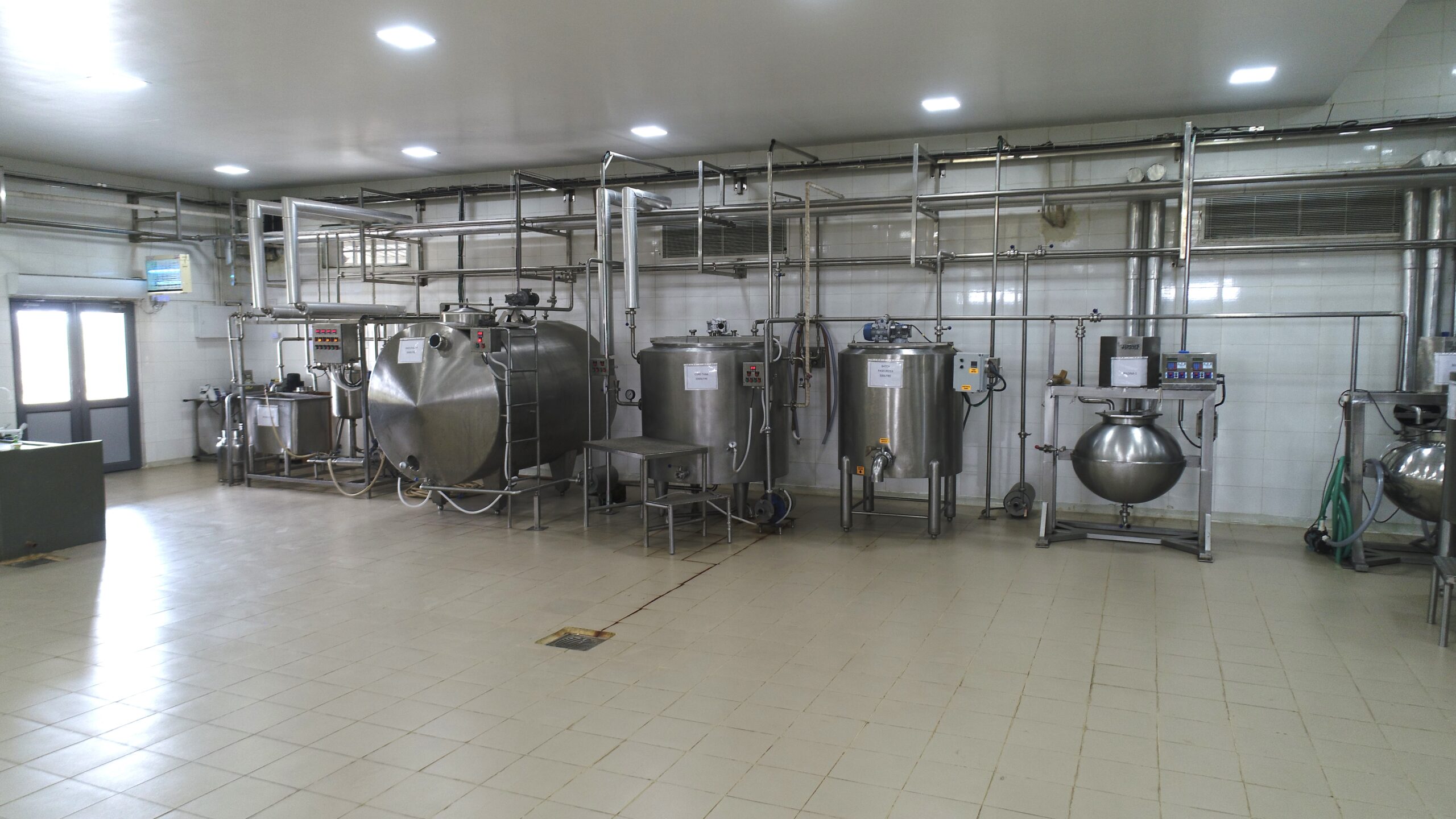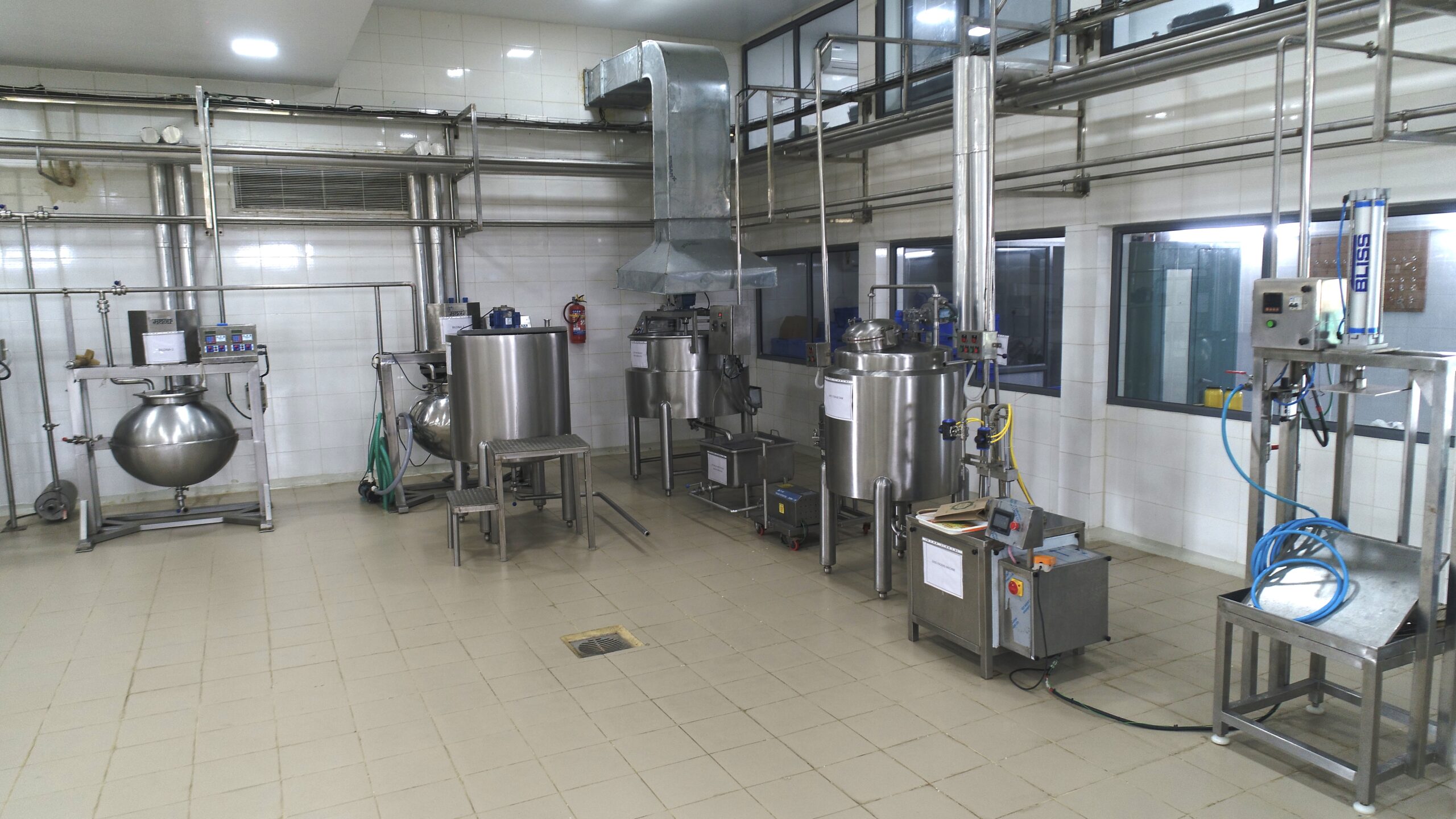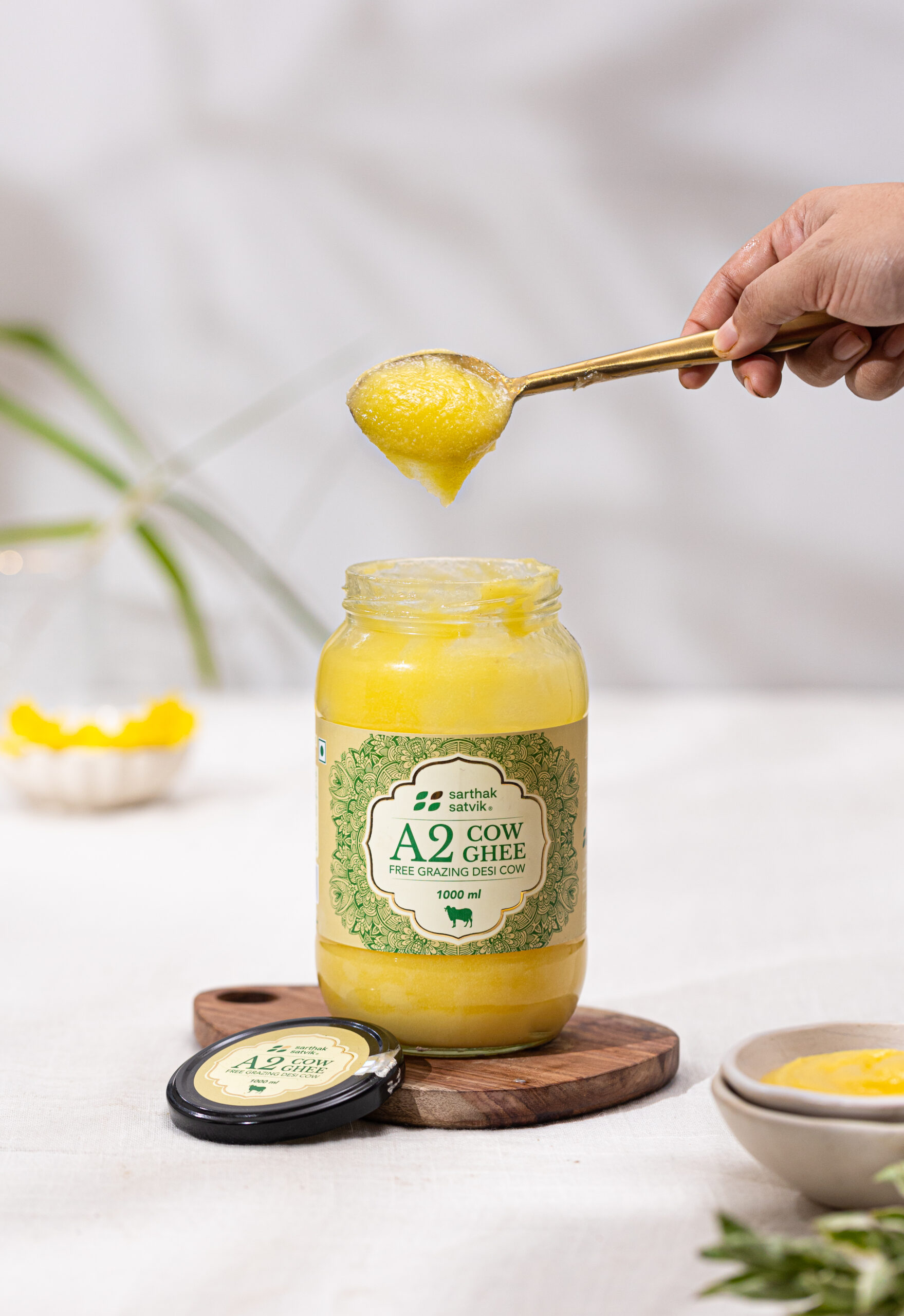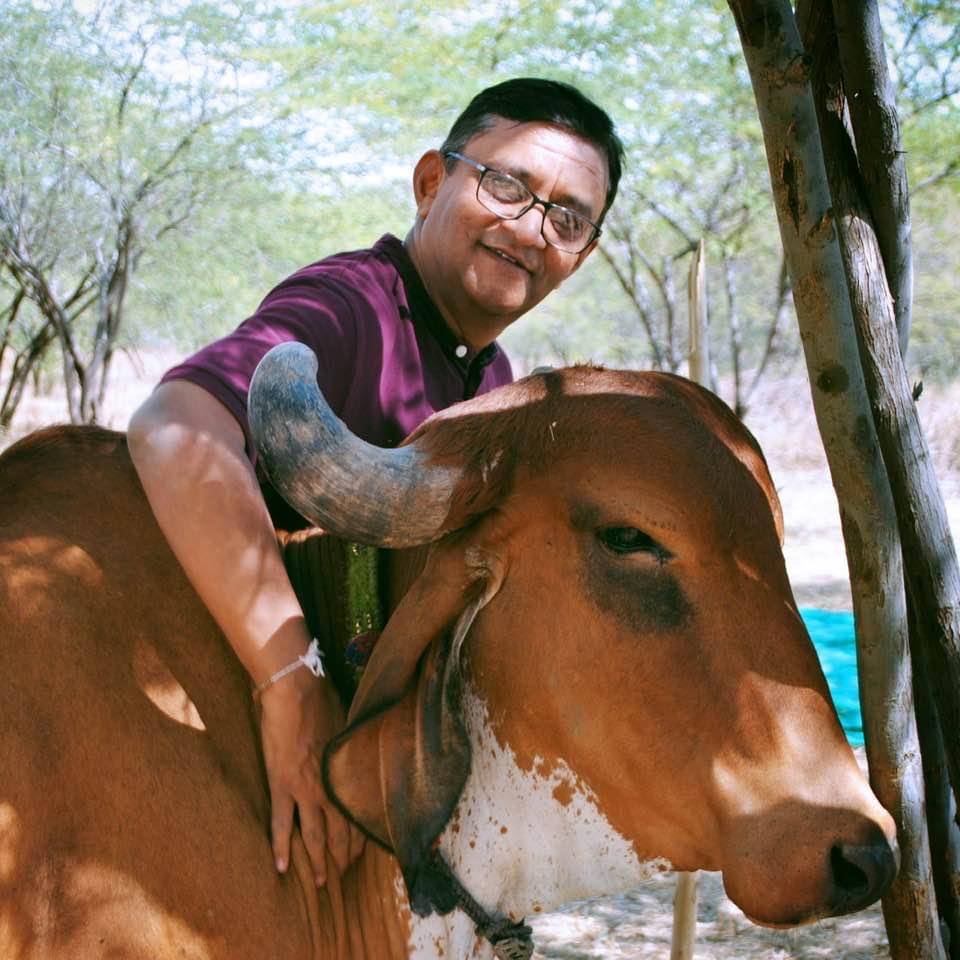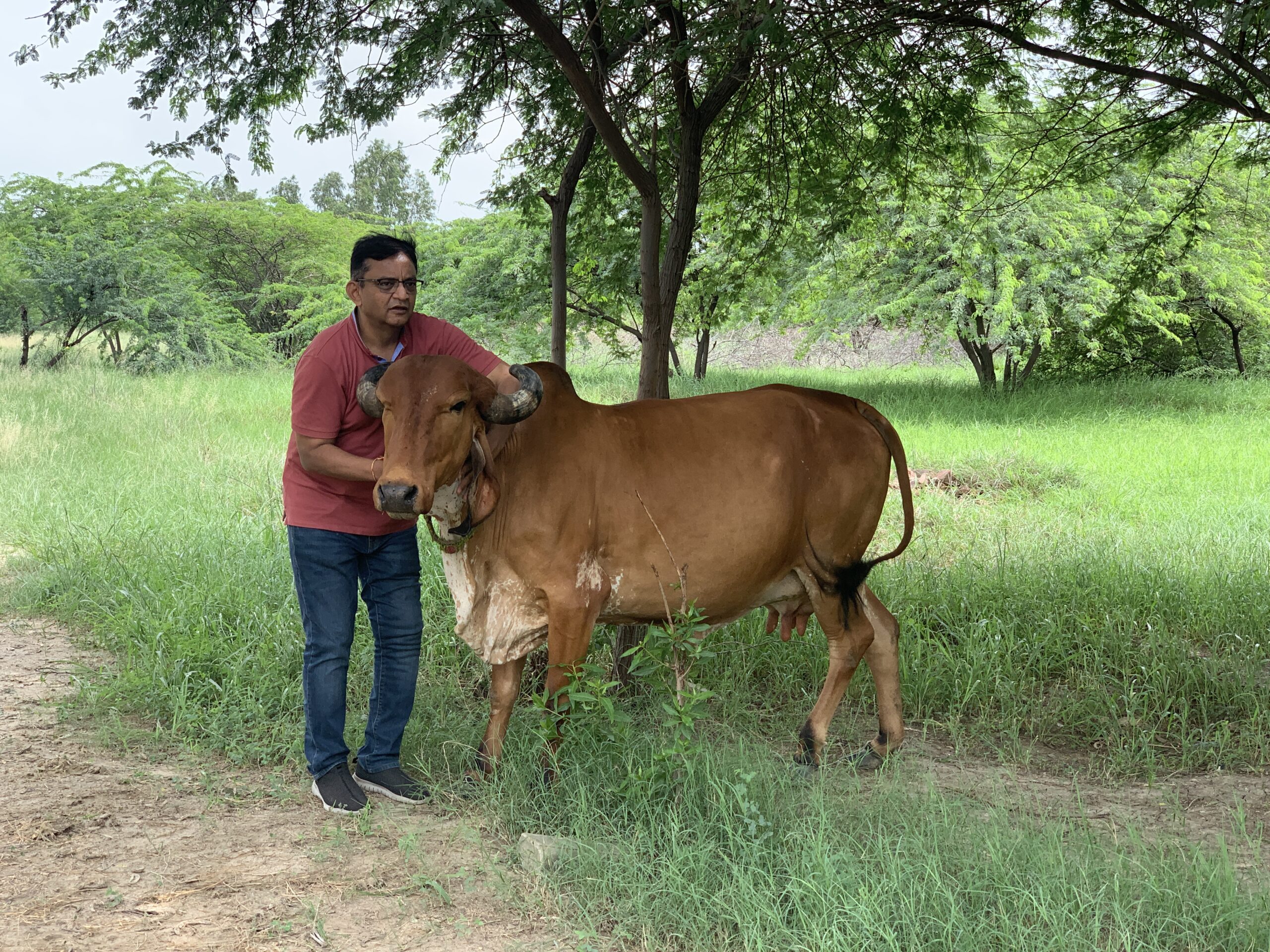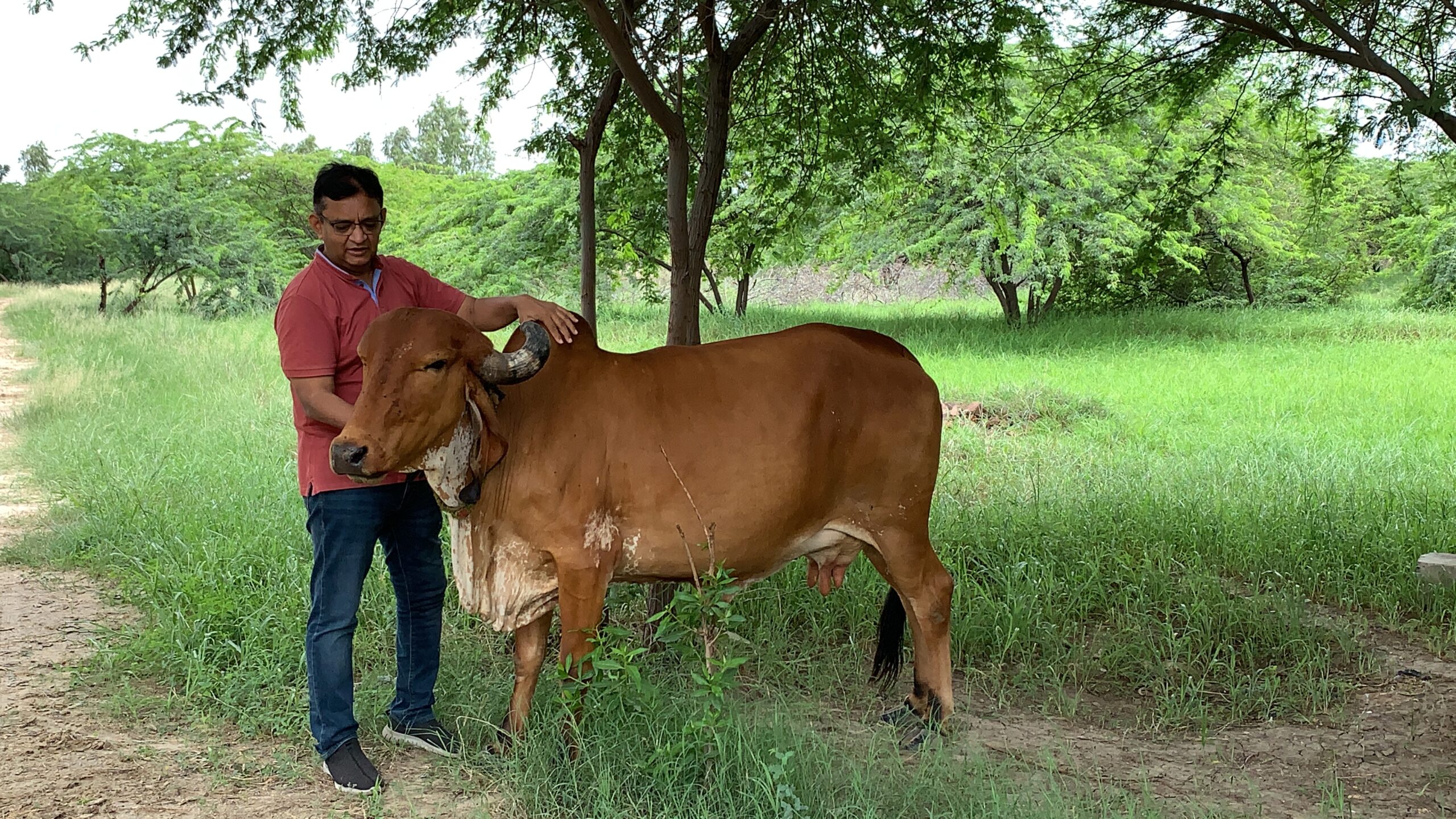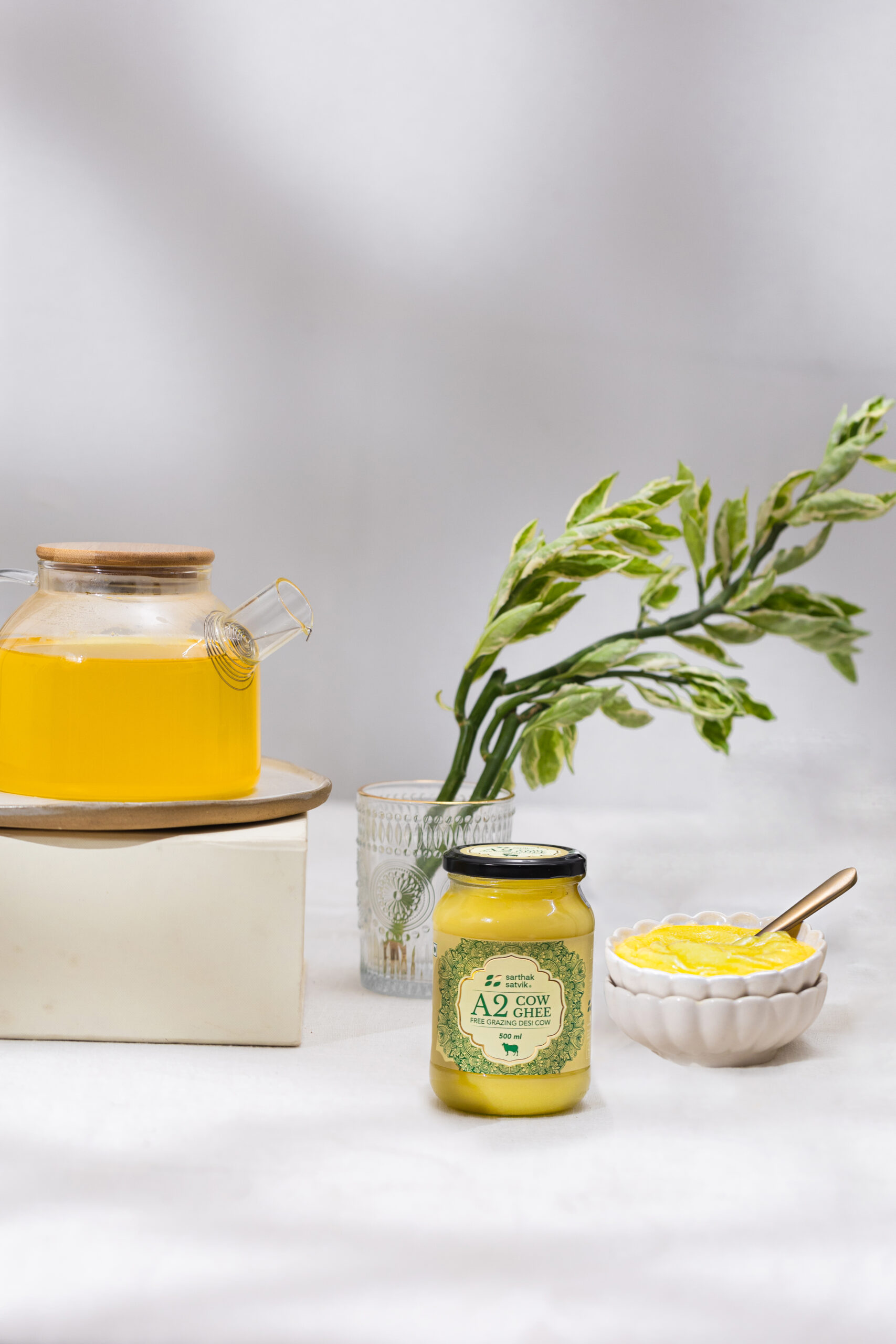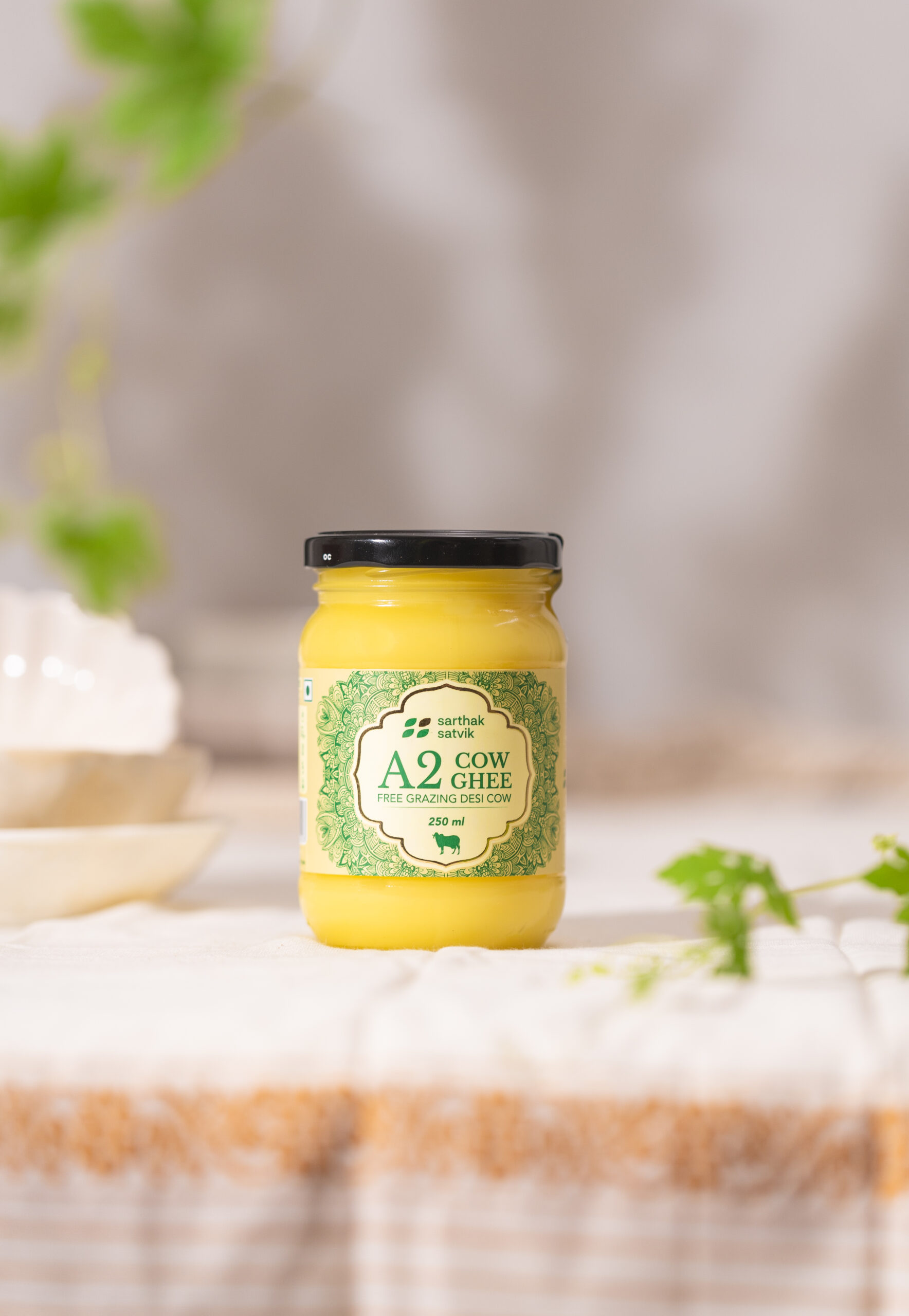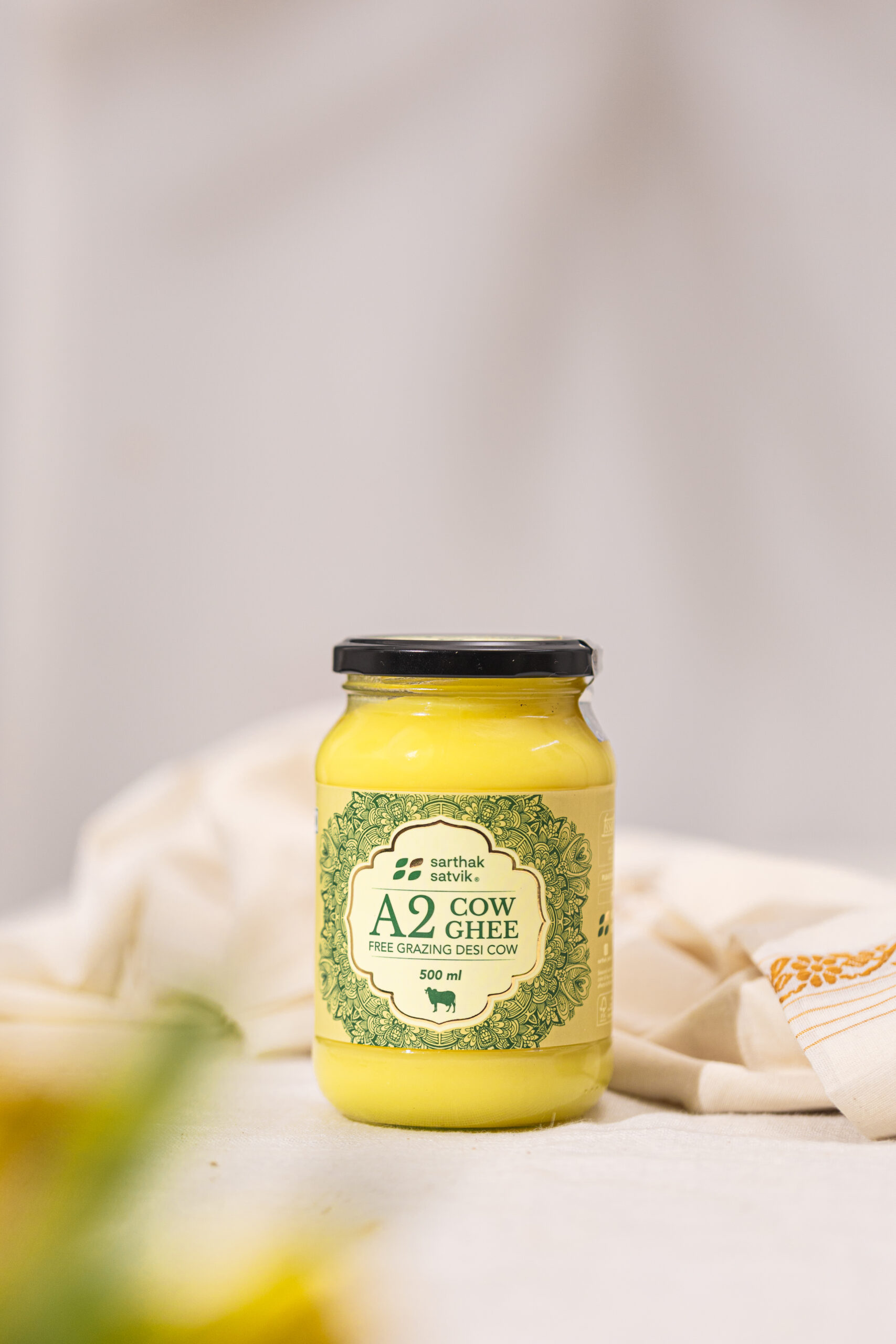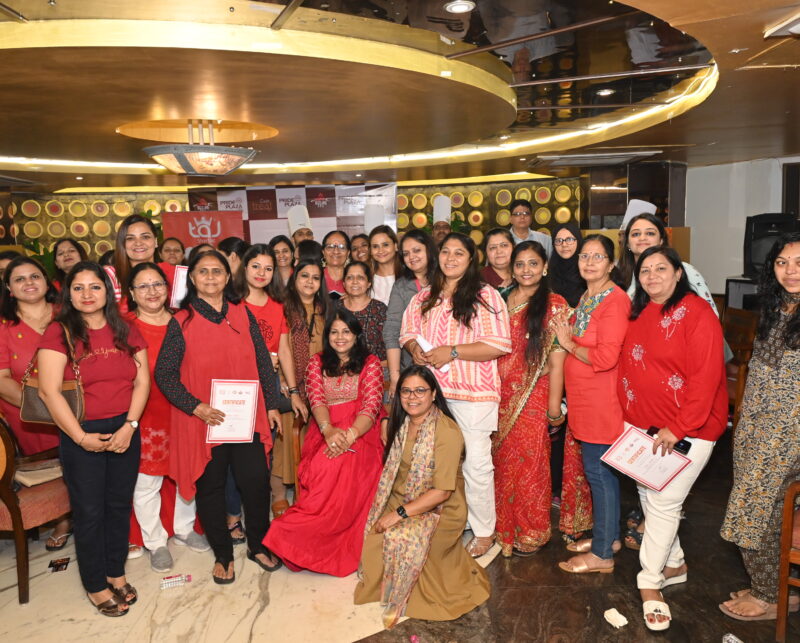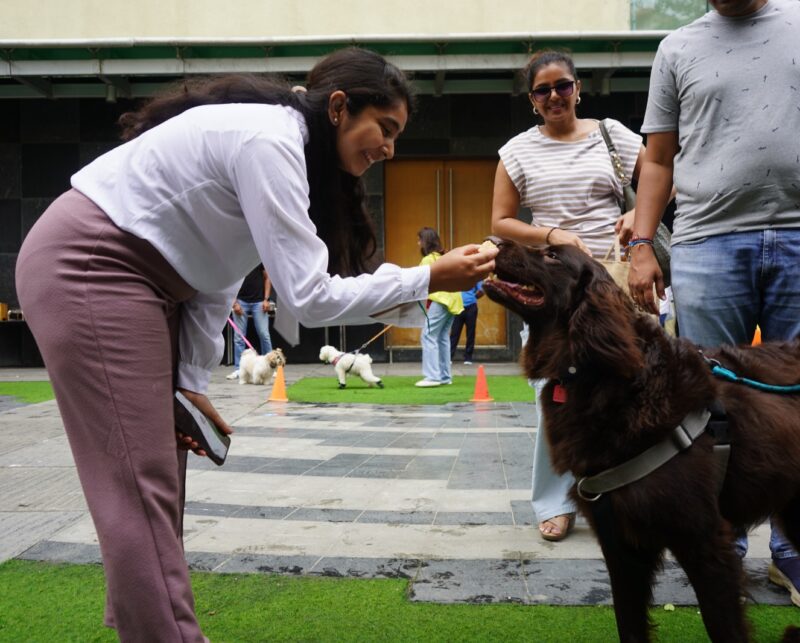Artisanal Ghee
Girish Kumar Patel of Sarthak Satvik talks about A2 milk products.
I have always wanted to get into the business of health food. Firstly, I have observed
lifestyle disorders among my near and dear ones. Secondly, I realise that there is a huge
gamp in the market for providers of clean health foods to consumer.
I got an opportunity to try the A2 milk of desi cows and the ghee that is made from the milk
of these native cows. I have been using A2 cow ghee right after my angioplasty surgery
for almost 2 years and was closely observing the cardiovascular parameters. My own
positive results after the changeover to consuming A2 milk cow ghee inspired me to make
this a product to be promoted.
I also found that the current market has many adulteration practises for providing the cow
ghee at economical rates, which of course adversely affect the health. So considering the
absence of good and consistent quality of A2 cow ghee, corresponding with a growing
willingness of people to spend on consuming healthy alternatives, led to my business
decision to produce A2 milk ghee.
Since we were in the field of niche premium real estate development with the name of
Sarthak, we decided to name the brand Sarthak Satvik offering premium and niche
healthly food. We have registered the brand name from 2010.
Developing the facilities
My market research yielded many misconceptions about ghee being bad for health. Our
meetings with dieticians and practitioners of various forms of medicine confirmed our belief
that ghee made with the right kind of milk and using pure processes is good for health.
When we went about looking for sources of A2 Milk, we found that the Bhal Region
between Ahmedabad and Bhavnagar has a good concentration of cows of the Gir breed.
The local farmers take their cows for free grazing covering an average of 10 km per day.
This free grazing means a bio-diverse food consumption of the cows and the 10 km free
range walk is also good for the cows. We selected land located near the archaeological
site of Lothal and Gundi village for the processing unit. Apart from availability of free-range
A2 Milk in the area, this spot is easily accessible from four cities, Ahmedabad, Vadodara,
Bhavnagar and Rajkot.
From the very start we were determined with only following the traditional practise of
making cow ghee from the bilona method. We wanted to churn the butter from the curd of
whole milk and not the cream of the milk and that too using the traditional bilona method
which churns the whole curd in both clockwise and anti-clockwise direction. We wanted to
follow the slow process of making the cow ghee to get the best outcome. The challenge
was to follow the traditional process with modern machines to maintain the consistency
and quality. We spent almost one-and-half years to develop a bilona machine which
resonate the traditional bilona process and also complies with all the FSSAI and
government norms.
We have given hygiene in the milk processing plant, utmost importance. The process is
set in such way that there is minimal human intervention, which gives us consistency and
quality.
One of the key features of the ghee plant is the Bilona Unit we have developed for our
captive production. We did not wanted to compromise on traditional slow churning process
and so did not want to buy the commercially available churning machine that are easily
available in the market. So we spent almost two years to design and execute the ghee
plant. We are getting very high quality output from our own developed bilona unit.
The artisan ghee market
Considering the increasing awareness towards healthy preferences, the market in India
towards premium gourmet food is going upwards. People are appreciating the value of
gourmet, slow-processed, artisan and handmade food, and are looking for trusted makers
of such food products.
So as far as A2 dairy products is concerned the overall market both online and offline is
increasing. Also considering the process involved in making the authentic A2 Milk Cow
Ghee, it is just like the difference of price and value between processed cheese and
artisan cheese. If you look at the benefits of health, taste, aroma and texture, it is value-
for-money compared to the commercially-produced ghee.
For the quality control, we have developed our very own procurement system to keep a
close observation on the quality of milk. We have stringent raw milk quality checking
machines and SOPs to make sure we get the best quality. Also to maintain the
consistency we make sure the whole process of making ghee is as per the defined SOP
which derived by our own trail and errors. We also have our in-house laboratory to test the
finished product.
We also have a visitor gallery for any of our consumer to see the process of making cow
ghee, we allow our consumers to visit out processing unit with a prior consent.
We have visible in m we do participate in exhibitions, farmers markets and events like
IFEA’s cooking workshops and competitions.
Along with Ghee we will be entering into direct to consumer of buttermilk and artisanal
cheese. We are also exploring the market for freeze-dried vegetables and other agri-foods
in coming future as we have established a good network of farmers doing natural farming.
Social and environmental consciousness
As of today we are procuring milk from surrounding villages by paying the premium prices
to farmers. Our procurement model is such that the surrounding villages farmers get good
prices. In order to do that we have recently started to give them quality feed for their cows
at much lower rates compared to what they were paying till now. We are also planning to
buy cow dung and cow urine from our milk supplying farmers to give them better financial
supports so that they can expand their cow farming activity. So along with EDI, we are
working on developing a model whereby we will be uplifting the lifestyle of surrounding
farmers. Thus, we are a fair trade company.
Also to become more environment friendly, we have installed a 23 kW commercial solar
power plant for our captive consumption. We have also reduced the fresh water usage by
installing geo-thermal cooling for better working environment inside the processing plant.
Agri-Tourism
We are planning to dovetail our agricultural activities with a tourism model. Currently, we
welcome visitors to come to our farm for a picnic and see the standards of manufacturing
that we follow.
We will be developing the surrounding facilities in phases to get tourists to the farm with
accommodation, recreational amenities, etc. Agri-tourism will encourage health, fitness,
and a love for tradition. The tourists will also become customers of our farm.
COOKING WITH GHEE
Ghee is a form of highly clarified butter that is free of water and milk solids.
Ghee has been part of Indian cuisines from millennia. It is recommended by
ayurvedic practitioners. Modern diets like Paleo Diet, Whole 30 and Keto
recommend it as an alternative to some of the dairy products.
Ghee is created by heating regular butter from cow’s milk until all the water
and milk solids can be strained away. What is left after this heating and
straining is the buttery, golden fat known as ghee. Ghee is both casein-free
and lactose-free, making it an alternative to butter and cream for those with
dairy sensitivities.
Ghee has a very high smoke point, making it a better choice over butter
and most edible oils for high-heat cooking. Ghee can be used as a
replacement for butter or oil, and is an excellent choice for frying, grilling
and sautéing as it cooks without burning. It can also be used as a
condiment on many dishes.
Ghee has a rich golden colour. It gives food a rich, deep and nutty flavor
profile.
Ghee can be infused with ginger, garlic, parsley, chives, turmeric or curry
powder to enhance the taste.
Ghee is high in nutrients like vitamin A, which is excellent for the immune
system and eye health. It also contains anti-inflammatory fatty acids,
including conjugated linoleic acid (CLA) and butyric acid. It has omega fatty
acids and also contains vitamin E, a potent antioxidant.
Ghee has a long shelf-life and can keep well.
It is advisable to buy Bilona Ghee made by a traditional process, which
helps it to retain the nutrients, taste, fragrance and texture.
The process:
Boiling raw A2 milk
Setting the curd
Churning of the curd
Separating the fat
Heating the butter
There is much adulteration and wrong labelling in the market, so it is
important to buy ghee from a trusted source.
A2 MILK
A2 milk is a variety of cows’ milk that mostly lacks a form of β-casein proteins called A1, and instead
has mostly the A2 form. Most indigenous breeds of India yield A2 milk.
There was a report from an international scientist stating that there is direct correlation
between lifestyle diseases and A1 protein. That’s how the modern nutritionists started
suggesting consumption of milk from native breed of cows. The population of non-native
cows are much more than the native cows, also the milk yield of non-native cows are
almost 2-3 times more than the indigenous cows. So the commercial ghee or any dairy
products produced in market are from non-native cows’ milk which have A1 protein in
them. Also as per our Ayurveda our desi cow milk is considered as whole food. It also
mentioned the use of bilona method and using the whole milk in curd making process.
We use the milk of Gujarat’s native Gir cows. The Gir is distinctive in appearance, typically having a
rounded and domed forehead (The only ultra-convex breed in the world), long pendulous ears and
horns which spiral out and back. Gir are generally mottled with the colour ranging from red through
yellow to white.
Karan Patel
Sarthak Satvik
BULLETPROOF COFFEE
Bulletproof coffee is a growing breakfast trend that combines coffee, oil, and ghee or
butter. Ghee Bulletproof Coffee is a rich, creamy coffee drink filled with healthy fats.
Using ghee instead of milk or creamer makes it a great tasting coffee with a creamy
texture and rich taste, which is also friendly for those who are dairy sensitive.
Recipe
Brew black coffee in a pan.
Preheat the container in which you can combine ghee and coffee. Blend the
ghee and coffee till you get a foamy layer.
Coconut oil is an optional addition to this coffee.
Spices such as turmeric, cinnamon, and cardamom may be added to enhance the flavour.
You may add jaggery, sugar, stevia or any other sweetener to the
bulletproof coffee before serving if you prefer sweetened coffee.
Girish Kumar Patel is the owner of Sarthak Satvik, which makes Free Grazing Cow Milk Ghee.
He proposes to open his farm as a tourist destination. https://sarthaksatvik.com
